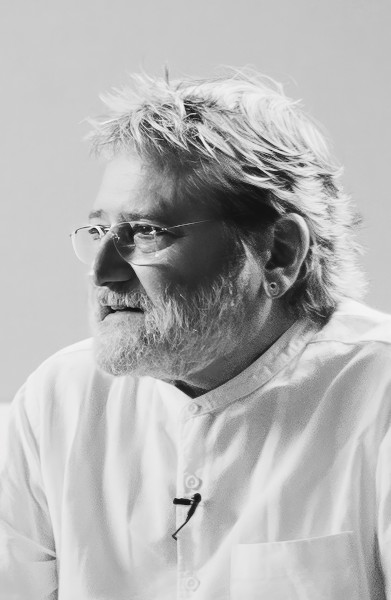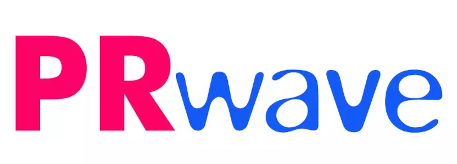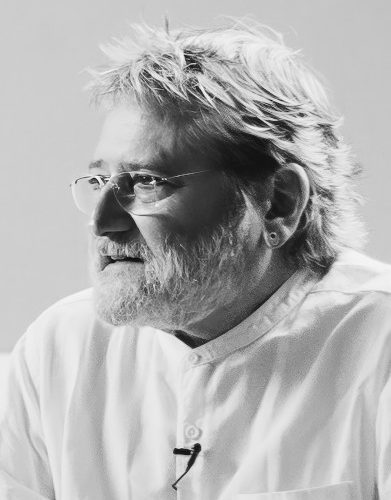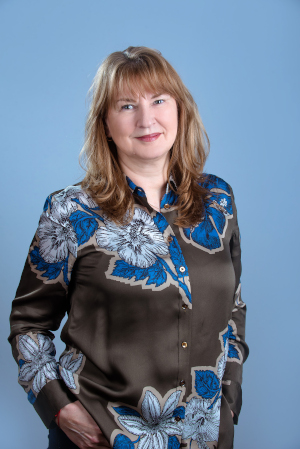We are honoured to invite you to read an exclusive interview with Alexander Manu, Professor at Ontario College of Art & Design University (OCAD University), Strategic Foresight Practitioner, Author and Advisor

Please tell us more about your career start and your connection to what you do today. What did you want to do when you were little, and how did you come up to have so many creative roles nowadays? How does someone get to do what you do today?
My journey began in the vibrant decade of the 1980s, a period marked by a digital revolution that saw the ascent of personal computers, entertainment devices, and an array of technological innovations. Initially, I focused squarely on product design, engaging deeply with the intricacies of creating products and entire product strategies. This early engagement laid a robust foundation for what would evolve into a multi-faceted career spanning various dimensions of design and innovation.
The transition from designing solitary products to strategizing for whole product lines around the late ’80s and early ’90s marked the beginning of a broader scope in my work. This period was crucial as it coincided with my growing involvement in the politics and promotion of industrial design. My election to the International Council of Societies of Industrial Design board was a pivotal moment that expanded my horizon beyond the conventional boundaries of design practice to its global, strategic implications.
How does the journey from a product designer to a thought leader in innovation and strategy occur? The answer lies in a “portfolio career”, a concept that encapsulates a series of professional chapters, each characterized by different focal points and expertise. Such a career is built on a foundational understanding that each endeavour, whether a design project, a public speech, or a publication, contributes cumulatively to a broader, more diversified skill set.
Throughout the mid-1980s and onwards, I embraced public speaking, which allowed me to share and refine my thoughts on a global stage, further influencing design and innovation. By 1996, I had begun consolidating my experiences and insights into written form, starting with my first book, “ToolToys”, which proposed a novel integration of functionality and pleasure in our interactions with technology. This book and its subsequent international exhibition began a prolific writing career that sought to explore and define the intersections of technology, creativity, and strategy.
How, then, does one embark on such a journey? The path involves a relentless pursuit of knowledge, a readiness to embrace and lead change, and an unwavering commitment to exploring and questioning the status quo. Each professional engagement, whether it be a keynote, workshop, or strategic consultation, is approached as an opportunity to challenge existing paradigms and to foster a vision of the future that is both inclusive and transformative.
The essence of my work, and perhaps the guiding principle for those aspiring to similar paths, is the belief that the future is crafted by our visions and actions today. It is about imagining the possibilities at the convergence of technology, business, and human potential and pursuing them with vigour and foresight. This is not merely a career but a continuous journey of discovery and impact that requires passion and perseverance.
What do you keep from your connection to Romania? How do you see Romania today?
My connection to Romania, from where the roots of my creative thought draw substantial nourishment, represents a profound dialogue between heritage and the narrative of self. The cultural legacy of Romania informs not just a geographical or historical context but serves as a bastion of my philosophical inquiries and intellectual pursuits. In Romania, I see a tapestry woven with the complexities of transition—a country perennially at the crossroads of tradition and modernization, embodying a unique European ethos while vigorously pursuing its own future narrative. This backdrop serves not only as a reminder of where I come from but also shapes the intellectual contours of where my thoughts might journey.
Today, Romania is a landscape of potential and progress, engaging with global trends while nurturing its local talents and resources. This blend of the old and the new, the traditional and the contemporary, enriches my recent re-connection to Romania, making it a part of my intellectual constitution.
We see a very divided perception regarding artificial intelligence. Why are you passionate about it and why do you believe it is relevant for the creative industries?
My passion for artificial intelligence (AI) stems from its profound potential to act as a catalyst within the creative industries, a sector continually poised at the cusp of innovation and human expression. AI, in its essence, offers a new lens through which we can explore and expand the horizons of creativity. This is not merely about automating tasks but about enhancing and extending the creative capabilities of human beings.
Throughout my career, I have witnessed the transformative impact of technology in design and strategic innovation. Technology has always played a pivotal role from the early days of pioneering product design to the complex strategies behind entire product lines. In the late 20th century, as we embraced the digital revolution, it became clear that technology was not just a tool but a participant in the creative process, influencing both the method and the outcome of creative endeavours.
In my writings and teachings, particularly evident in my recent work, “Transcending, Imagination, Artificial Intelligence and the Future of Creativity”, I advocate for a view of AI that transcends traditional boundaries. AI should be seen as a creative partner, offering new ways to engage with materials, concepts, and even our perceptions. The relevance of AI in creative industries lies in its ability to merge data with design, intuition with analysis, and to foster a synergy that can lead to unprecedented forms of artistic and commercial expression.
This perspective is crucial in a time when the creative industries are not just about generating aesthetically pleasing or functionally relevant products but are also about crafting experiences and stories that resonate on a deeper human level. AI can analyze vast amounts of data to uncover trends not immediately apparent to human observers, suggest potentially unseen alignments and aesthetics, and thus open doors to novel artistic expressions.
Why am I passionate? Because AI embodies the potential to redefine the foundations upon which the creative industries are built. It challenges us to rethink what innovation means and how we can harness this vast potential to imagine and construct the future. In an era where technology integration in our daily lives continues to deepen, embracing AI in the creative sectors is not just relevant; it is essential. It represents a forward-thinking approach that aligns with my life’s work: to navigate and guide through the evolving landscapes of technology and human potential. This is where AI becomes not just a tool but a transformative element in the creative orchestra of our society.
What is your main philosophy when approaching your profession?
My main philosophy when approaching my profession is fundamentally rooted in the belief that the future is a canvas we actively paint, not a scenario that merely unfolds before us. This perspective underpins every facet of my work, from product design to strategic foresight and educational endeavours. In the early stages of my career, the focus was on creating products that were not just functional but also transformative in how they integrated into and influenced everyday life. As I transitioned into roles that involved strategizing at broader organizational levels, this philosophy expanded to encompass how entire companies could pivot and adapt in response to changing technological landscapes.
The integration of creativity and strategic thinking is at the core of my professional ethos. This amalgamation allows for a holistic approach where every challenge is an opportunity to innovate, and every innovation is a step towards a future we choose to create. It is not merely about responding to trends but anticipating or dictating them, thereby moulding the future to our vision and values.
My writings and teachings further amplify this proactive approach to shaping the future. Through these mediums, I aim to equip individuals and organizations with the mindset and tools needed to survive and thrive in an era of rapid change. Viewing technology as an extension of human creativity opens up myriad possibilities for innovation and improvement in our lives and work environments.
Ultimately, my philosophy centers on the power of human potential when synergized with technology and strategic insight. This synergy enables us to transcend traditional boundaries and explore new design, strategy, and beyond horizons. Each step in my career has been a testament to this belief—from the intricacies of product design to the broad vistas of global consultancy and thought leadership.
What do you think that are the main questions that someone should ask himself/ herself in order to create a better design? What is better design, from your point of view anyway?
In contemplating the essence of better design, one must first engage with probing questions that guide the mind toward a more profound understanding of what constitutes ‘better.’ These inquiries are not merely practical but are deeply philosophical, reflecting on the core values and purposes that design serves.
1. What is the purpose of this design? This foundational question shifts focus from the mere functionality of a product or service to its raison d’être. It compels the designer to consider the immediate application and the broader impact on the user’s life and environment. It is about understanding the ‘why’ behind the ‘what’.
2. Whom does it serve? A better design is inherently empathetic. It seeks to understand its users, needs, aspirations, and limitations. This question ensures that the design aligns closely with its intended users, enhancing its relevance and utility.
3. How does it improve upon the existing alternatives? Innovation is at the heart of better design. This question challenges designers to think beyond the conventional, urging them to explore how their creation adds value. Does it simplify complexity? Does it bring joy? Does it solve a problem more efficiently?
4. What are the long-term implications of this design? This question is crucial in an age where sustainability must be noticed. A better design is sustainable, considering its environmental, economic, and social impacts throughout its lifecycle.
5. How does it reflect its time’s cultural and ethical values? Design does not exist in a vacuum; it reflects the society and times it originates from. This question ensures that the design respects and incorporates these dimensions, making it a product or service and a piece of cultural communication.
Better design transcends the boundaries of aesthetic and functional improvement. It is a holistic approach that integrates utility, joy, sustainability, and cultural significance. It is the kind of design that not only answers immediate needs but also anticipates future challenges and opportunities. It respects its users, enhances their experience, and contributes positively to the broader ecosystem it inhabits. Thus, a better design is not merely about creating something new; it is about envisioning a future where design is integral to a more thoughtful, inclusive, and sustainable human experience.
You are one of the curators of the product design section of RDW Exhibition (Romanian Design Week) this year. First of all, what should we consider when we think about product design?
When considering product design for the Romanian Design Week exhibition, it is imperative to approach this domain as a dynamic interplay of creativity, functionality, and cultural relevance. Product design is not merely about crafting objects but about encapsulating experiences and facilitating interactions that reflect and shape society’s culture and behaviours.
To delve into this field, one must first recognize the profound role of human desires and the cultural context in which these desires manifest. Every product reflects the human longing to enhance life’s quality, a tangible response to its users’ evolving needs and aspirations. As such, designers must engage deeply with the ethos of their audience, understanding not just the functional requirements but the emotional and cultural nuances that drive preference and usage.
Moreover, product design at a prominent event like the RDW Exhibition should underscore innovation—merging tradition with futuristic ideas. This involves reimagining everyday objects not just as tools but as cultural artifacts, imbued with the potential to influence lifestyles and, indeed, the very fabric of society. Each product should be seen as a component of a larger narrative that speaks to the transformative power of design in our lives.
Finally, sustainability must be woven into the narrative of product design, advocating for materials and processes that respect and preserve our environment. This forward-looking approach challenges us to think beyond immediate functionality and aesthetics to consider the long-term impacts of our design choices on the planet and future generations.
When curating the product design section, fostering a dialogue that bridges the aesthetic with the pragmatic, the individual with the collective, and the traditional with the innovative, enriching the human experience through thoughtful and provocative design is essential.
What caught your attention regarding the projects selected at RDW Exhibition this year? What is spectacular about them and what can the general public learn from them?
The projects showcased at this year’s Romanian Design Week captivated attention primarily through their innovative use of biodegradable materials, a testament to the designers’ commitment to sustainability and eco-consciousness. This focus is not merely a trend but a profound reflection of a growing global awareness that demands designs which honour our environmental responsibilities. Such materials challenge us to reconsider our interactions with everyday objects, reminding us that what we create must coexist harmoniously with the natural world.
Emerging designers at the exhibition were notable for their diversity and creativity. They presented a variety of bold new ideas that challenge conventional aesthetics and functionality. These creations serve as both a mirror and a window: they reflect the current socio-cultural zeitgeist and open views to new possibilities in design thinking and material use.
For the general public, these exhibits offer lessons in the power of innovation aligned with ecological integrity. They demonstrate how design can be both beautiful and beneficial to the planet, encouraging a reevaluation of consumer habits and preferences in favour of more sustainable choices. By engaging with these pioneering works, individuals are invited to reflect on the impact of their consumption and the potential for transformative change through conscious design decisions.
What is the most surprising thing you discovered since working in your field? What about the hardest one?
The exploration of my professional journey reveals a tapestry of transitions and revelations that shape my perspective on innovation and foresight. Among the most surprising discoveries has been the capacity of design to function not merely as a form of aesthetic expression but as a profound instrument for strategic transformation. The early years of my career coincided with the digital revolution, and this period highlighted the transformative power of design in shaping the interfaces and experiences that define our interaction with technology. This revelation was not merely surprising but also exhilarating, as it expanded the designer’s role from creator to strategist, influencing not just product form but also its strategic positioning in the marketplace.
The most complex challenge, however, has been the constant need to advocate for the value of design beyond its traditional confines. In both my roles on international boards and through my speaking engagements, I have often encountered resistance to viewing design as a strategic severe tool rather than merely an aesthetic enhancement. This challenge was particularly pronounced in the early stages of introducing Experience Design as a discipline, where it required a significant shift in thinking to embrace design as a methodology capable of shaping products and complete user experiences and business strategies. The resistance to this broader view of design’s potential necessitates continuous education and advocacy, making it a persistent and challenging aspect of my career.
These aspects of my career underscore the dual nature of my journey: the delight in discovering the expansive potential of design and the rigour in overcoming skepticism towards its strategic value. Each career phase has built upon the previous, creating a cumulative understanding that guides my current focus on the future interplay of technology, creativity, and human potential.
Despre Romanian Design Week
Romanian Design Week este festivalul multidisciplinar dedicat industriilor creative, organizat de The Institute, prezentat de UniCredit Bank și finanțat de Ministerul Culturii. Anul acesta va avea loc între 24 mai și 2 iunie la București, în clădirea fostului restaurant CINA, lângă Ateneul Român.
Ediția din acest an invită publicul să exploreze orașul și să descopere potențialul acestuia, investigând în același timp metodele prin care creativitatea și inovația pot modela spațiile urbane ale viitorului, sub tema „Unlock the city”.
RDW Exhibition, unul dintre formatele festivalului, propune peste 200 de proiecte din 6 categorii diferite: arhitectură, design interior, design vestimentar, design grafic, design de produs și ilustrație. Acestea au fost alese de un board format din șase echipe de curatori locali și internaționali.
Biletele pot fi achiziționate de aici. Elevii, studenții și pensionarii au acces gratuit, iar deținătorii de card UniCredit de la Mastercard beneficiază de un discount de 50% la achiziția biletelor.
About Alexander Manu
Alexander Manu is a visionary who has consistently challenged the boundaries of innovation, strategy, and foresight, an individual whose insights have not only shaped industries but have also inspired countless professionals to reimagine the future and their role in it. He is a celebrated author, a distinguished professor, and a sought-after consultant who has advised Fortune 500 companies, governments, and academic institutions. His work has been a catalyst for change, challenging the status quo and pushing boundaries in ways that redefine what is possible.
With a career spanning decades, he has been a beacon of inspiration, guiding businesses and individuals alike to navigate the ever-evolving landscape of technology, design, and human potential. His teachings and writings have been instrumental in helping organizations transition from the industrial to the knowledge value economy, emphasizing the importance of imagination, creativity, and personal transformation.
Alexander Manu believes that the future is not something that happens to us, but something that we create. His insights into the intersection of technology, business, and human behavior have made him a leading voice in shaping the future of our interconnected world.




![Interviuri în exclusivitate “Comunități pentru binele comun”: Clubul Impact Aha și [H] Brașov: “Schimbarea în Bine a unei societăți durabile începe cu tine însuţi!”](https://www.prwave.ro/wp-content/uploads/2024/06/impact_aha_poza-360x240.jpg)